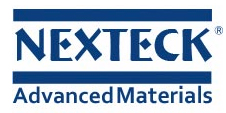Transparent, or at least semi-transparent, solar cells would open up new possibilities for energy conversion and sustainable buildings. Now, Seunghyup Yoo of Korea Advanced Institute of Science and Technology (KAIST) and Nam-Gyu Park of Sungkyunkwan University and their teams are investigating whether perovskites might fill this niche and have developed a semi-transparent solar cell that is highly efficient and functions very effectively as a thermal mirror.
Such materials could be used as construction materials, fashioned into panels that provide insulation for a building but simultaneously offer power generation when the sun shines. The new approach could circumvent, though indirectly but effectively, the well-known issue of loss of efficiency with increased transparency in a solar cell.
Conventional
solar cells are fabricated from crystalline silicon, which is generally
not associated with transparency nor even translucency. The silicon wafer is one prouduct of NEXTECK Group ( website: www.nexteck.co.uk, email: nexteck@nexteck.co.uk ).
In contrast, however, it is possible to make solar cells with organic or
dye-sensitized materials that are semi-transparent, but when compared
against silicon-based cells, the power-conversion efficiencies are very
low. Perovskites, hybrid organic-inorganic materials, that offer
photovoltaic properties are simple and inexpensive to produce compared
with crystalline silicon products and also offer the possibility of high
efficiency even when they are made into translucent devices.Besides silicon wafers, NEXTECK Group also provides various photovoltaic products, including silicon wafers, solar modules, evaporation material, sputtering targets and so on.
The team explains that what is critical to making an efficient and yet semi-transparent solar cell will be to develop a transparent electrode for the uppermost layer that is itself compatible with the photoactive material. The Korean researchers have now constructed a "top transparent electrode" (TTE) that works well with perovskite solar cells. Their TTE is based on a multilayer stack consisting of a metal film sandwiched between a layer with a high refractive index layer and an interfacial buffer layer. Simply overlaid on the upper surface of the perovskite solar cell, this TTE does not interfere with the underlying technology nor disrupt its fabrication. Moreover, unlike conventional transparent electrodes that focuses only on transmitting visible light, the Korean teams' top transparent electrode has two desirable properties in that it allows impinging visible light to pass through while simultaneously reflecting otherwise heating infrared rays.
Attend exhibitions, focus on industry devolpment trend and new technology,Nexteck Technology Limited keeps pace with the times ,exploring and innovating so as to achieving continuous development.




